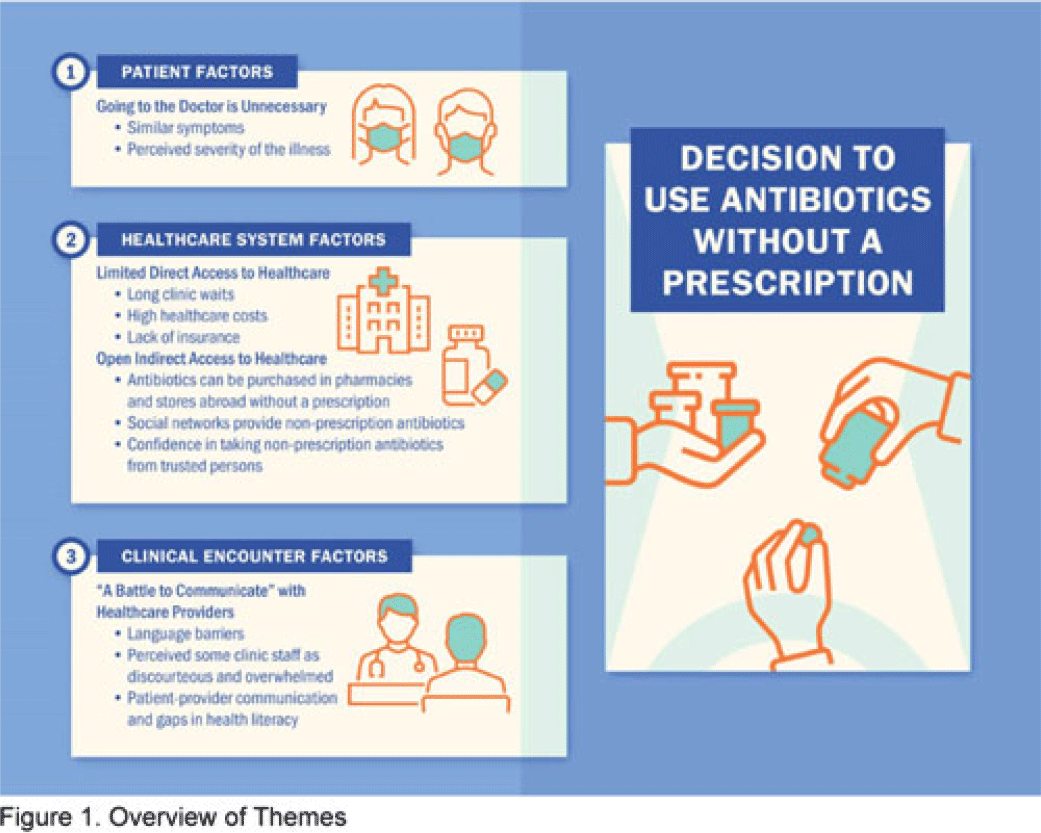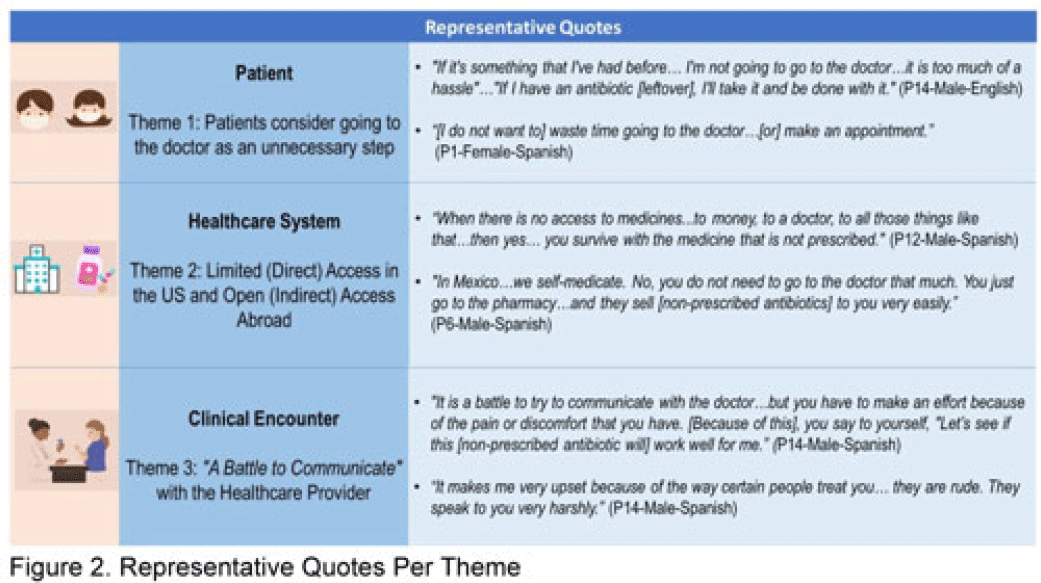224 results
Population and contact tracer uptake of New Zealand’s QR-code-based digital contact tracing app for Covid-19
-
- Journal:
- Epidemiology & Infection / Accepted manuscript
- Published online by Cambridge University Press:
- 17 April 2024, pp. 1-20
-
- Article
-
- You have access
- Open access
- Export citation
Anisotropic span embeddings and the negative impact of higher-order inference for coreference resolution: An empirical analysis
-
- Journal:
- Natural Language Engineering , First View
- Published online by Cambridge University Press:
- 25 January 2024, pp. 1-22
-
- Article
-
- You have access
- Open access
- HTML
- Export citation
Perspectives on nonprescription antibiotic use among Hispanic patients in the Houston metroplex: A qualitative study
-
- Journal:
- Antimicrobial Stewardship & Healthcare Epidemiology / Volume 3 / Issue S2 / June 2023
- Published online by Cambridge University Press:
- 29 September 2023, p. s20
-
- Article
-
- You have access
- Open access
- Export citation
Use of narratives to communicate organics with commodity grain farmers
-
- Journal:
- Renewable Agriculture and Food Systems / Volume 38 / 2023
- Published online by Cambridge University Press:
- 29 August 2023, e39
-
- Article
-
- You have access
- Open access
- HTML
- Export citation
Excessive fear of clusters of holes, its interaction with stressful life events and the association with anxiety and depressive symptoms: large epidemiological study of young people in Hong Kong
-
- Journal:
- BJPsych Open / Volume 9 / Issue 5 / September 2023
- Published online by Cambridge University Press:
- 14 August 2023, e151
-
- Article
-
- You have access
- Open access
- HTML
- Export citation
Substance use before or during pregnancy and the risk of child mortality, perinatal morbidities and congenital anomalies
-
- Journal:
- Epidemiology and Psychiatric Sciences / Volume 32 / 2023
- Published online by Cambridge University Press:
- 11 July 2023, e43
-
- Article
-
- You have access
- Open access
- HTML
- Export citation
An investigation of the seasonal relationships between meteorological factors, water quality, and sporadic cases of Legionnaires’ disease in Washington, DC
-
- Journal:
- Epidemiology & Infection / Volume 151 / 2023
- Published online by Cambridge University Press:
- 15 May 2023, e88
-
- Article
-
- You have access
- Open access
- HTML
- Export citation
Instrumented insoles for assessment of gait in patients with vestibular schwannoma
- Part of
-
- Journal:
- Wearable Technologies / Volume 4 / 2023
- Published online by Cambridge University Press:
- 10 May 2023, e14
-
- Article
-
- You have access
- Open access
- HTML
- Export citation
291 High Potency STING Agonists Induce Adaptive Immunity-Dependent Curative Responses in an Immune Checkpoint Blockade-Refractory Glioblastoma Model
- Part of
-
- Journal:
- Journal of Clinical and Translational Science / Volume 7 / Issue s1 / April 2023
- Published online by Cambridge University Press:
- 24 April 2023, pp. 87-88
-
- Article
-
- You have access
- Open access
- Export citation
Computerized-adaptive testing versus short forms for pediatric inflammatory bowel disease patient-reported outcome assessment
-
- Journal:
- Journal of Clinical and Translational Science / Volume 7 / Issue 1 / 2023
- Published online by Cambridge University Press:
- 14 April 2023, e109
-
- Article
-
- You have access
- Open access
- HTML
- Export citation
Vaccine-preventable hospitalisations in adult mental health service users: a population study
-
- Journal:
- Psychological Medicine / Volume 53 / Issue 15 / November 2023
- Published online by Cambridge University Press:
- 05 April 2023, pp. 7232-7241
-
- Article
-
- You have access
- Open access
- HTML
- Export citation
Impact of changing case definitions for coronavirus disease 2019 (COVID-19) hospitalization on pandemic metrics
-
- Journal:
- Infection Control & Hospital Epidemiology / Volume 44 / Issue 9 / September 2023
- Published online by Cambridge University Press:
- 13 March 2023, pp. 1458-1466
- Print publication:
- September 2023
-
- Article
- Export citation
A decision-support tool for funding health innovations at a tertiary academic medical center
-
- Journal:
- International Journal of Technology Assessment in Health Care / Volume 39 / Issue 1 / 2023
- Published online by Cambridge University Press:
- 13 February 2023, e11
-
- Article
-
- You have access
- Open access
- HTML
- Export citation
Foodborne illness outbreaks linked to unpasteurised milk and relationship to changes in state laws – United States, 1998–2018
-
- Journal:
- Epidemiology & Infection / Volume 150 / 2022
- Published online by Cambridge University Press:
- 25 October 2022, e183
-
- Article
-
- You have access
- Open access
- HTML
- Export citation
Open innovation: the key to advancing brain health
-
- Journal:
- CNS Spectrums / Volume 28 / Issue 4 / August 2023
- Published online by Cambridge University Press:
- 29 July 2022, pp. 392-394
-
- Article
-
- You have access
- HTML
- Export citation
Intelligent and Automatic Parameter Optimization for High-resolution Electron Ptychography
-
- Journal:
- Microscopy and Microanalysis / Volume 28 / Issue S1 / August 2022
- Published online by Cambridge University Press:
- 22 July 2022, pp. 3102-3103
- Print publication:
- August 2022
-
- Article
-
- You have access
- Export citation
Prehistoric agricultural decision making in the western Himalayas: ecological and social variables
-
- Article
-
- You have access
- Open access
- HTML
- Export citation
Prevalence and correlates of suicidal behaviours in a representative epidemiological youth sample in Hong Kong: the significance of suicide-related rumination, family functioning, and ongoing population-level stressors
-
- Journal:
- Psychological Medicine / Volume 53 / Issue 10 / July 2023
- Published online by Cambridge University Press:
- 02 June 2022, pp. 4603-4613
-
- Article
-
- You have access
- Open access
- HTML
- Export citation
The attention atlas virtual reality platform maps three-dimensional (3D) attention in unilateral spatial neglect patients: a protocol
-
- Journal:
- Brain Impairment / Volume 24 / Issue 3 / December 2023
- Published online by Cambridge University Press:
- 30 May 2022, pp. 548-567
-
- Article
-
- You have access
- Open access
- HTML
- Export citation





